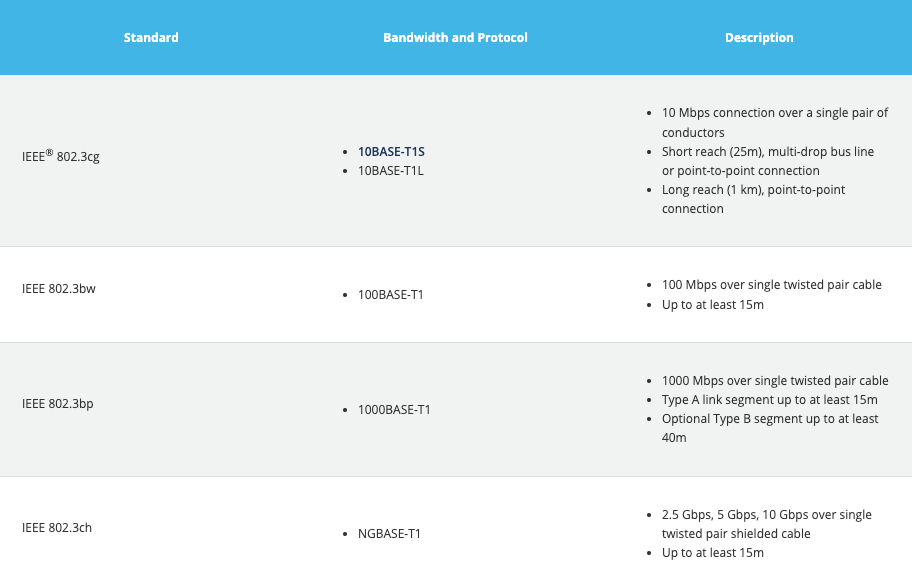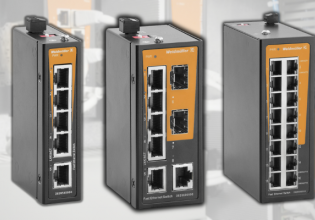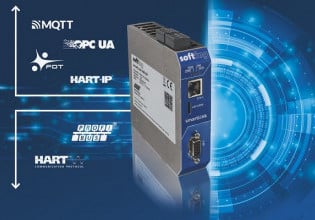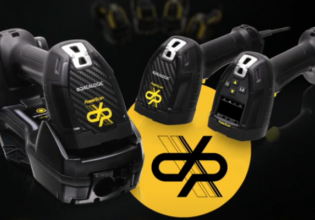Microchip Technology Demonstrates the Utility of Single Pair Ethernet (SPE)
SPE opens up the possibility for faster and simpler Ethernet in the industrial environment. Microchip Technology aims to get system designers thinking about how new designs can benefit by implementing SPE.
Recently, embedded control systems manufacturer Microchip Technology announced additions to its Single Pair Ethernet (SPE) portfolio, including 10BASE-T1S and industrial versions of its 100BASE-T1 devices. The new offerings aim to lower the costs of and simplify edge devices and support Ethernet at higher speeds.
The company’s online guide shows how Single Pair Ethernet (SPE) can be used when designing new products for the Industrial IoT. The guide aims to get system designers thinking about how new designs can benefit by implementing SPE over other protocols and systems.

Microchip's new LAN8650 (left) and LAN8651 (right) 10BASE-T1S MAC-PHY Ethernet Controllers with Serial Peripheral Interface. Image used courtesy of Microchip Technology
What Is Single Pair Ethernet (SPE)?
SPE is a way to integrate multiple devices over an Ethernet protocol, but by only using two of the Ethernet lines for data transfer. Instead of having to locate sensors and actuators by power sources or run new electrical lines to process equipment, SPE allows for power transfer along the same cable system as data transfer. Doing so frees up other lines for Power over Ethernet (PoE) applications and reduces the system's physical and electrical complexity.
At first glance, it may appear that SPE must be slower than other protocols, as only two wires are available for data transfer. As it turns out, SPE is capable of operating at T1 speeds, meaning it will not be the weak point in data transfer speeds.
Another advantage of SPE implementation is data security. Unlike wireless systems, such as WiFi and Bluetooth, there is no way to intercept data passing through SPE unless the hacker is physically inside the building and physically connected to the equipment. This drastically reduces the chances of industrial espionage, sabotage, ransomware, and other cyberattacks that have plagued various industries in the last few years.
Table of IEEE standards and protocols (click to enlarge). Image used courtesy of Microchip Technology
Potential Applications in Design
The advantage of PoE, as applied through SPE, is that sensors and controls only require one port—data and power move through the same cabling assembly. This allows devices to be designed in a more compact form factor, adding to the versatility and ease of installation. Smaller mounting brackets can be used, and bulky “wall wart” power supplies are no longer required.
Maintaining the security of these devices is much easier than with wireless systems. SPE controllers can be placed in more mission-critical applications where data security is essential, such as controls for process equipment.
Consider a control that operates a valve to allow coolant to flow past a reactor to remove waste heat. Even though it is “just a valve,” if a hacker took control of it (for fun, terror, or profit), the results could be catastrophic. With SPE, they will not be able to intercept or interfere with the control via a radio frequency (RF) link as they could with Bluetooth or Wifi. It won’t stop all cybersecurity attacks, but it reduces the number of entry points.
The compact size and the enhanced security mean that SPE can be used in virtually any industry. Large manufacturing and processing facilities can particularly benefit from SPE as new power cables are not required.

SPE frees up lines for PoE applications and reduces the system's physical and electrical complexity. Image used courtesy of Microchip Technology
Faster, Simpler Ethernet
At some point, there will be a physical limit to how much data can be transmitted through copper cables at a time. SPE opens up the possibility for much faster, simpler Ethernet in the industrial environment. SPE is simultaneously a tested, established, mature standard, yet it will be here for many years to come.








Very interesting this question about safety at industry.
Edemilso Ilha from Brazil